Shopping for a motorcycle enthusiast can be tricky, especially if you’re not familiar with the gear and gadgets that make riding more enjoyable. Whether it’s the thrill of the ride, the joy of the open road, or the love for motorcycles themselves, finding the perfect Christmas gift can feel overwhelming. Here is a guide of […]

How Often Should You Replace Motorcycle Coolant?
Motorcycles have two wheels, and an engine that roars, and they give you this feeling of freedom that can make you forget your annoying boss. However, with all that fun, you should be responsible too. One responsibility that often gets overlooked is to replace motorcycle coolant.
Don't just ignore this—it's not about making your engine happy; it's about keeping it alive. Let's get into the deets about when and how often you need to switch out the colorful coolant in your motorcycle.
Table of Contents
What Does Coolant Do?
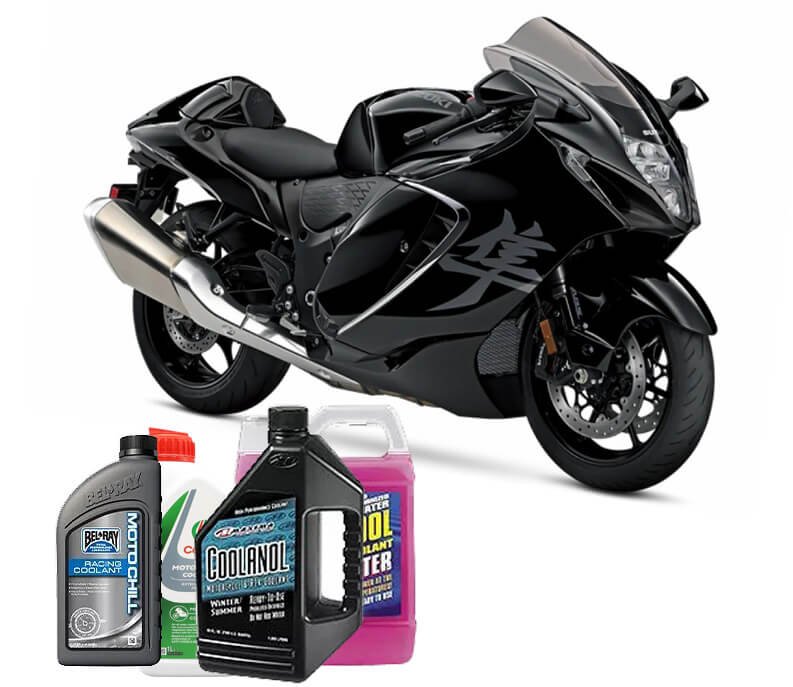
motorcycle coolant
Motorcycle antifreeze, which folks also call coolant, is this fluid that keeps your engine's temperature in check. It zips through the cooling setup snagging all the warmth your engine makes and then spreading it out so things don't get too hot. When it's chilly out, it stops the stuff in the cooling system from turning into ice.
Here’s what it handles:
- Heat Transfer: The coolant takes in heat from the engine and moves it to the radiator so the air can carry it away.
- Corrosion Protection: The coolants are full of extras that stop rust and the buildup of hard deposits in your cooling system.
- Lubrication: The coolant can also help things like water pump and seals work without a hitch.
Why Does Coolant Need to Be Changed Regularly?
If your motorcycle doesn't have coolant or if it's using some super old coolant, your engine might overheat, rust out, or just quit on you. It's like trying to run a super long race wearing a heavy winter coat. Not a good idea, right?
Here’s why it’s essential to replace it regularly:
- Chemical Breakdown: Over time, the chemicals in the coolant that block rust and prevent deposit formation might degrade. When these additives aren't effective anymore, your engine could be at risk for corrosion or gunk up.
- Contamination: Coolant might grab some grime, bits, and pieces from the motor as it moves around. This rubbish can jam up the cooling setup or mess with how well it moves heat around.
- pH Imbalance: As coolant flows through the system, it can pick up dirt, debris, and particles from the engine. These contaminants can clog the cooling system or reduce heat transfer efficiency.
- Overheating Risk: If your coolant is old or not up to par, it won't get rid of heat like it should. This means there's a bigger chance your engine might overheat.
- Freezing Risk: If the coolant’s antifreeze properties deteriorate, it may freeze during cold weather, causing cracks or leaks in the cooling system.
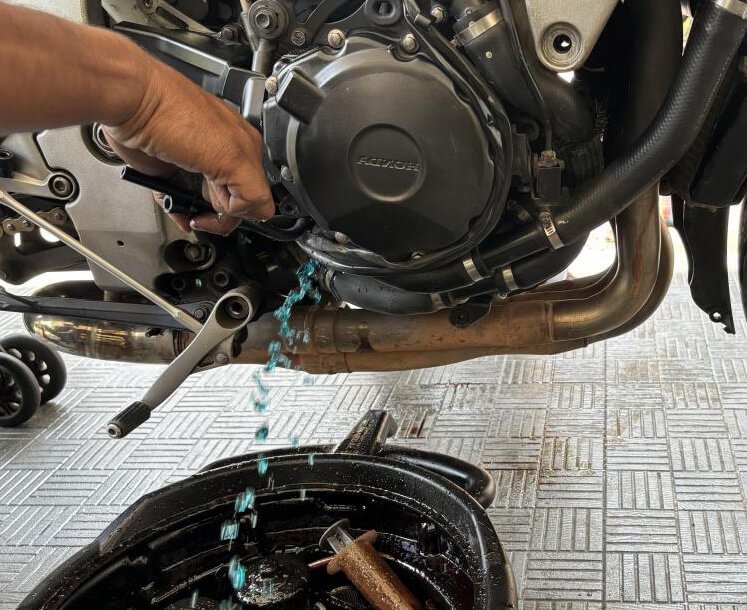
change motorcycle coolant regularly
How Often Should You Replace Motorcycle Coolant?
The short answer: every two years or 24,000 miles, whichever comes first. If you’re using long-life coolant (LLC), it may last for up to five years or 50,000 miles.
The longer answer? It depends on a few factors:
1. Manufacturer Recommendations
Your bike’s owner’s manual is the holy book for maintenance schedules. Some motorcycles might call for a coolant change every year, while others can stretch it to three years. Follow those guidelines like your bike’s life depends on it—because it does.
2. Coolant Type
Coolants aren’t one-size-fits-all. Here’s a quick breakdown:
- Ethylene Glycol Coolants (Green): These are the most common and usually need replacing every two years.
- Organic Acid Technology (OAT) Coolants (Orange or Pink): These can last up to five years but check your manual to be sure.
- Hybrid Coolants: A mix of the two, offering moderate longevity—typically around three years.
Pro Tip: Mixing different types of coolant is a terrible idea. It’s like putting pineapple on pizza—some say it works, but you’ll regret it later.
3. Riding Conditions
Do you ride like you’re auditioning for the next Fast & Furious? Are you stuck in traffic under the blazing sun? Extreme conditions put extra stress on your coolant, meaning you may need to replace it more frequently. Regularly inspecting your coolant levels and quality can help catch issues before they escalate.
Signs to Replace Coolant
If you're clueless about when your ride last got new coolant.
Here are some hints that you should change it out:
- Color Change: Good Coolant to go looks like bright green, orange, or pink. If yours is looking brown, cloudy, or just dirty, change it, please.
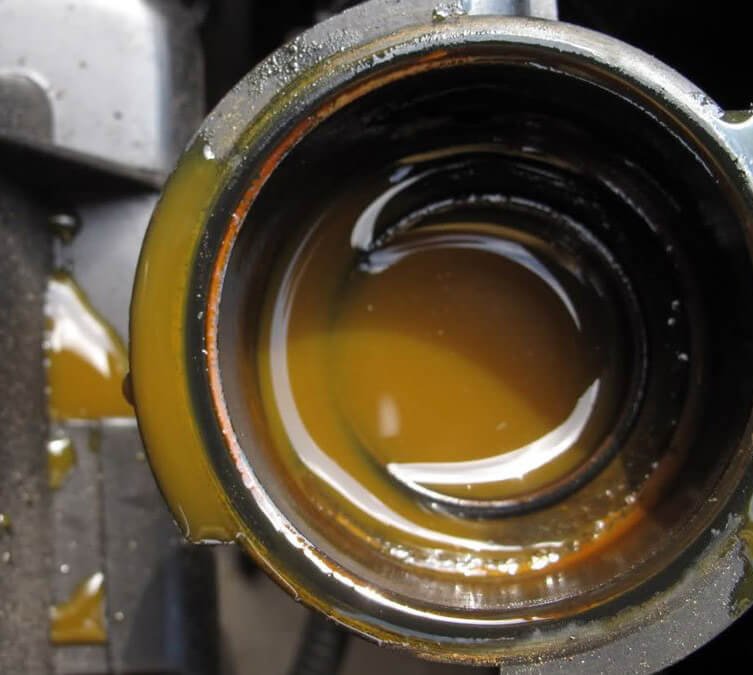
You can tell if your coolant needs to be replaced by its color.
- Bad Smell: Catching a whiff of something burnt or sweet? That's a sign your coolant might be on its last legs, or you have some issues under the hood.
- Low Levels: If your coolant level keeps dropping, you might have a leak—or worse, a head gasket issue.
- Overheating: When your motorcycle starts feeling the heat more than it should, old coolant could be the culprit.
How to Replace Your Motorcycle Coolant
Replacing motorcycle coolant is a simple task if done carefully.
Here are the steps:
- Let the Engine Cool Down: Make sure your engine's cooled off before you start, if you don't want to get burned! Forgetting it's a no-no to twist off that radiator cap while everything's still toasty.
- Find the Drain Bolt: Locate the coolant drain bolt, usually near the water pump or at the bottom of the engine. Check the owner’s manual if unsure.
- Drain the Old Coolant: Time to evict the old coolant! Slide a drain pan under the bolt, yank it out, and let the old coolant flow out. Crack open the radiator cap to make it all hustle out faster.
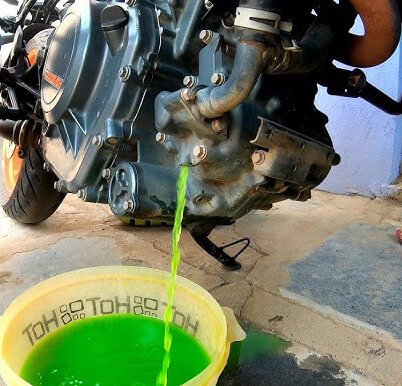
drain the old coolant
- Flush the System: Chuck some distilled water into the radiator, fire up your engine for a short hangout then say goodbye to all that water and yucky leftovers.
- Refill with New Coolant: Grab a funnel and introduce the new coolant to its home. Keep pouring till it's chock-full.
- Bleed Air Bubbles: Start the engine, let it run briefly, and top off the coolant if needed.
- Recheck Levels: After a short ride, check and adjust the coolant levels. Dispose of old coolant responsibly.
How Riding Conditions Affect Coolant Maintenance
Your riding habits and environment can impact how often you need to change your coolant.
Here are some factors to consider:
- Frequent Short Rides: If you mostly ride short distances, your engine may not reach its optimal temperature often, which can lead to sludge buildup in the coolant system. In this case, you may need to change your coolant more frequently.
- Hot Climates: Riding in hot weather puts extra stress on your cooling system. Check your coolant more frequently to ensure it’s in good condition.
- Cold Climates: If you ride in freezing temperatures, old or degraded coolant can freeze and cause damage. Always make sure your coolant has adequate antifreeze properties.
- Off-Road Riding: Dirt, mud, and debris can clog the radiator or contaminate the cooling system. Clean your radiator and check your coolant regularly if you’re an off-road rider.
Tips for Keeping Your Cooling System Healthy
- Regular Inspections: Ensure you examine the coolant levels and scout for any leaks after a few weeks pass.
- Don’t Cheap Out: Always use high-quality coolant recommended for your motorcycle.
- Replace Hoses and Seals: Since rubber bits can break down as time moves on, don't forget to watch them when you're swapping out your coolant.
- Monitor Riding Conditions: If you’re pushing your motorcycle hard or riding in extreme heat, be extra vigilant.
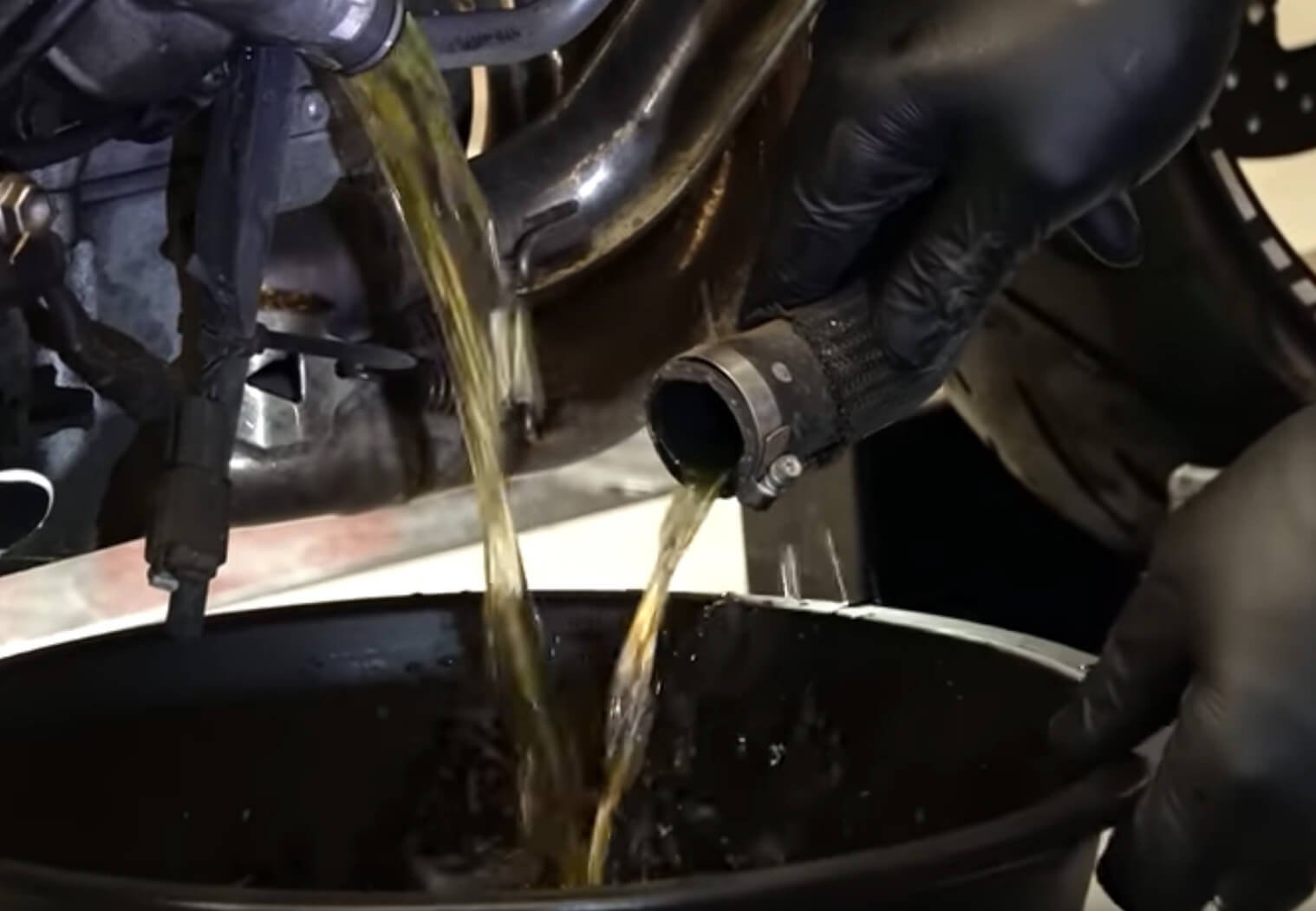
Regular Inspections to keep your cooling system healthy
Conclusion
The coolant in your motorcycle does a lot more than just fill up the tank. It plays a major part in keeping your engine chilly, rust-free, and running. You should change it out every couple of years—or follow what the manual suggests—to make sure your ride stays up and running.
Please treat your motorcycle right. Replace some fresh coolant in time to maintain a stellar cooling system, and savor every trip. Trust me, there's nothing worse than seeing your motorcycle overheat and smoke up while everyone else speeds away toward the horizon.

Motorcycle mechanic, writer. Interested in motorcycle gear for years. Like to stay up to date with the newest products and techniques of the motorcycle.
Fodsports FX-S released now! In the world of motorcycle communication systems, Fodsports has become a trusted name. This intercom brand is known for producing high-quality yet affordable helmet intercoms. Their latest release, the Fodsports FX-S, is no exception. The Fodsports FX-S is tailored for riders who need a dependable and budget-friendly 2-way intercom system. It […]
How do you communicate while snowboarding? Which is the best way to communicate with others while on the snowboard slope? Snowboarding is an exhilarating sport that combines the thrill of speed with the beauty of nature. But, maintaining communication with friends or partners on the slopes is hard. This is also a challenge to many […]
Introduction to motorcycle helmet audio systems As a passionate rider, I understand the thrill of hitting the open road with the wind in your face and the roar of the engine beneath you. However, there's one aspect that can take your riding experience to new heights. That is the ability to enjoy your favorite tunes […]
There are more best motorcycle to motorcycle communication systems than ever in 2025. Riders can seek them much more easily than before. Nowadays, modern intercoms offer crystal-clear audio, long-range capabilities, and seamless integration with helmets. These devices enable riders to stay in touch with their group, listen to music, take calls, and get GPS directions. […]
Do you know what mesh motorcycle communication is? How to choose the best mesh intercom for your motorcycle intercom? Introduction Riding a motorcycle is an exhilarating experience, but communication can be a challenge. In this article, I will lead you to enter the mesh motorcycle communication systems. These innovative technologies allow riders to stay connected […]

